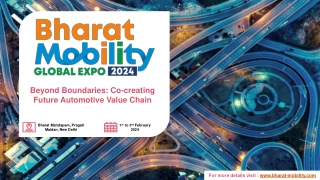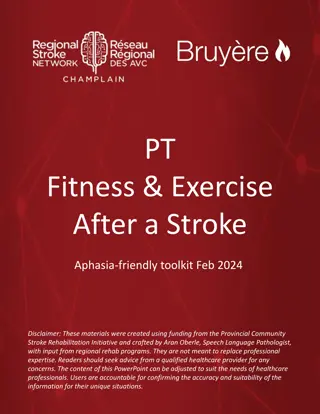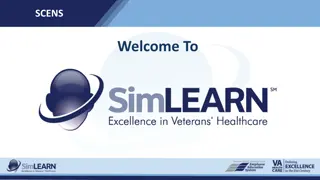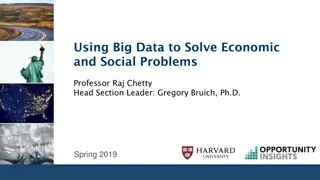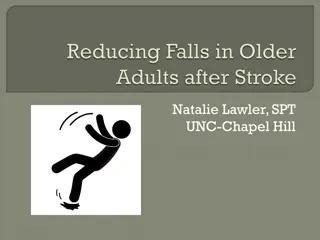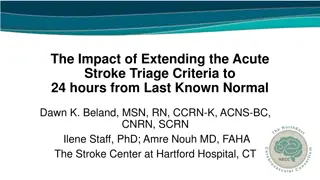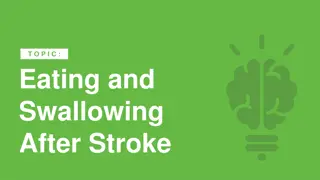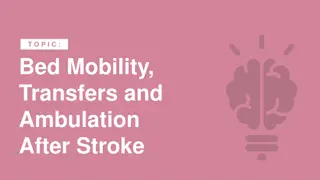Essential Guide to Mobility After Stroke
Mobility after a stroke can be challenging due to muscle weakness, altered sensations, and cognitive changes. This article discusses factors impacting mobility, the importance of safe practices, and general principles for assisting individuals in movement post-stroke. Tips on creating a safe environment, communication strategies, and body mechanics are also highlighted.
Download Presentation

Please find below an Image/Link to download the presentation.
The content on the website is provided AS IS for your information and personal use only. It may not be sold, licensed, or shared on other websites without obtaining consent from the author. Download presentation by click this link. If you encounter any issues during the download, it is possible that the publisher has removed the file from their server.
E N D
Presentation Transcript
T O P I C : Mobility After Stroke
Mobility After Stroke Mobility is the ability to move one s body (e.g. moving in or out of bed, transferring to a chair, and walking) A stroke can cause weakness to one side of the body (hemiplegia), changes in sensation and altered muscle tone This can impact a person s ability to move Regular mobility is important. It can improve function, decrease pain, enhance mood, and prevent skin breakdown and contractures 2
Mobility After Stroke What you should know: There are many factors that can impact mobility including: The Environment The Caregiver The Person s Abilities Communication Cognition Weakness and muscle tone Balance and posture Coordination Vision and perception Sensation Mood and fatigue Motivation Pain Lighting Knowledge Equipment Skill Space Confidence Resources available Wellness Organizational policies Size/height and procedures Familiarity with the person 3
Mobility After Stroke What you should know: Practicing safe mobility can: Prevent falls Prevent injuries Promote independence and active participation Promote better health of the person with stroke 4
Mobility After Stroke General Principles of Safe Mobility Plan for extra help if needed Encourage the person to do as much as they can Your goal is not to lift the person but to support them Always follow your organization s lift policies Do not rush Recognize that the person s energy levels can change throughout the day 5
Mobility After Stroke Smart Tips: Prepare the environment Communicate the plan to the person and any helpers Be mindful of the person s affected arm during mobility activities and handle very carefully 10
Mobility After Stroke Be mindful of any lines (e.g. feeding tube, oxygen) Think about your own body mechanics: keep your body close to the person bend your knees keep your back straight avoid twisting 11
Mobility After Stroke Smart Tips Always follow the care plan! Position yourself on the person s affected side and as close as possible Continue to communicate with the person Offer verbal and visual cues for each step of the activity Provide support at the shoulder blade, the hip, or waist Never hold onto clothing or pull on the person s affected arm 12
Mobility After Stroke Before you leave, ensure that the person is well supported, safe and comfortable Ensure that all necessary items are within reach Check on the person and offer position changes frequently Let the team know if there is a change in mobility status 13
Mobility After Stroke Seek extra support Occupational Therapists and Physiotherapists are skilled in mobility and transfers. It may be helpful to involve them in the person s care If communication is impacting mobility, consider consulting a Speech Language Pathologist Smart Tips for Stroke Care (2023) was created by members of the Regional Stroke Networks of Ontario. This material may be shared without permission from the authors, without changes and with source credited. 14






